Speed tip: Keep acidulated water for sliced fruit
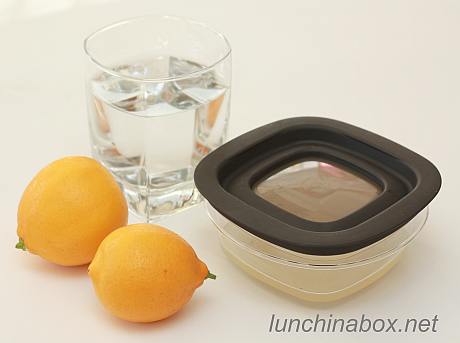
One of my basic tips for preventing cut fruit from browning is to dip the fruit in acidulated water right before packing. This will slow the browning process, not halt it. This is great, but mixing up sweetened lemon water to my taste takes a minute or two in the morning that I’ve been looking to cut. Yes, I’m really that lazy! So I found a shortcut that works for me and cuts my morning prep time by a couple of minutes… (Read on for details, a link to vote in the Speed Bento Contest, and a bento comic!)
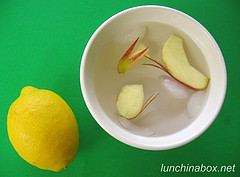
To review, there are a number of things that will slow the enzymes that cause browning in cut fruit. Anything with ascorbic acid (vitamin C) works, including lemon juice, lime juice, orange juice, cream of tartar, a crushed vitamin C tablet dissolved in water, or even ground chili pepper. I like the flavor that orange juice adds to fruit, but often use bottled lemon juice with a little Splenda or sugar for the same effect without the pucker. Salt water also slows browning and adds an interesting savory bite to fruit.
This week I’ve been speeding up the process by storing a watertight container of premixed sweetened lemon water in the refrigerator. So in the mornings I cut off just as much apple or other fruit as I need, dip it quickly in the lemon water, then pack it up in the bento box. As long as your fruit, cutting surfaces, and knives are clean, you can keep your acidulated water in the fridge for several days without needing to change it out. [EDIT: Kate from the Warm Olives bento blog keeps a spray bottle of lemon juice in her refrigerator for the same purpose; no need to change it out. Good idea!]
This works for me as I don’t tend to pack a full apple or pear in my four-year-old’s lunch; I just need a couple of slices: a quarter of the fruit at max. But once it’s cut I want to use it up ASAP before it turns brown and soft in the refrigerator, which means repeat appearances in that week’s packed lunches or after-school snacks. It may not seem like a lot of time saved, but it helps me overcome a psychological hurdle — it somehow feels like less of an obstacle to cutting up fruit when I know I’ve got a quick bath for it waiting. It comes in handy when making apple bunnies, decorative banana wedges, or packing any kind of cut fruit.
This appeals to me on a couple of levels: 1) time saving, and 2) frugality of not throwing away something that can be used again. It’s a similar in concept to pre-filling sauce containers or building up a freezer stash: do things in advance so that you don’t waste any time when you’re actually packing lunch.
FURTHER READING:
- Rabbit-shaped apple wedges (TUTORIAL)
- Decorative banana wedges (TUTORIAL)
- Bento FAQ and Biggie’s Top Speed Tips
- The Decorative Food page, and the Product Reviews page

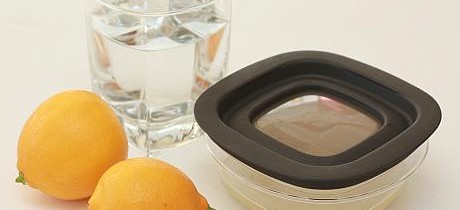
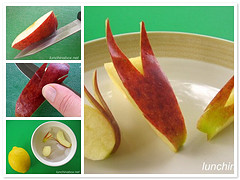
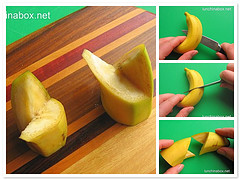





Recent Comments
Poll: What bento information interests you? (29)
Jenifer |
FAQRichard Malakuskie | The Nerdie Birdie | Shaking up the Lunch Routine: Popcorn with Toppings - Popcorn Blog | Justin Wright |
Oshibori: We don’t need no stinking wet wipes!Daniel |
Homemade gnocchi box lunches (22)Lisa |
Guide to choosing the right size bento box (82)Julie |
Confessions of an ostrichBernice |
Top Tips (4)miamidish.net | Cheap Seat Eats |
How to make Spam Musubi (69)Scratching Ramen |
School auction bentos with stuffed mushrooms (8)Marci |
Speed Bento: leftover storage and portion guidelinesAdverbios de tiempo |
Fried Shrimp Bentos: Simple vs. Fancy (43)Mimi |
Fruit cup jello jigglers in everyday containers (42)Madison Moms Blog |